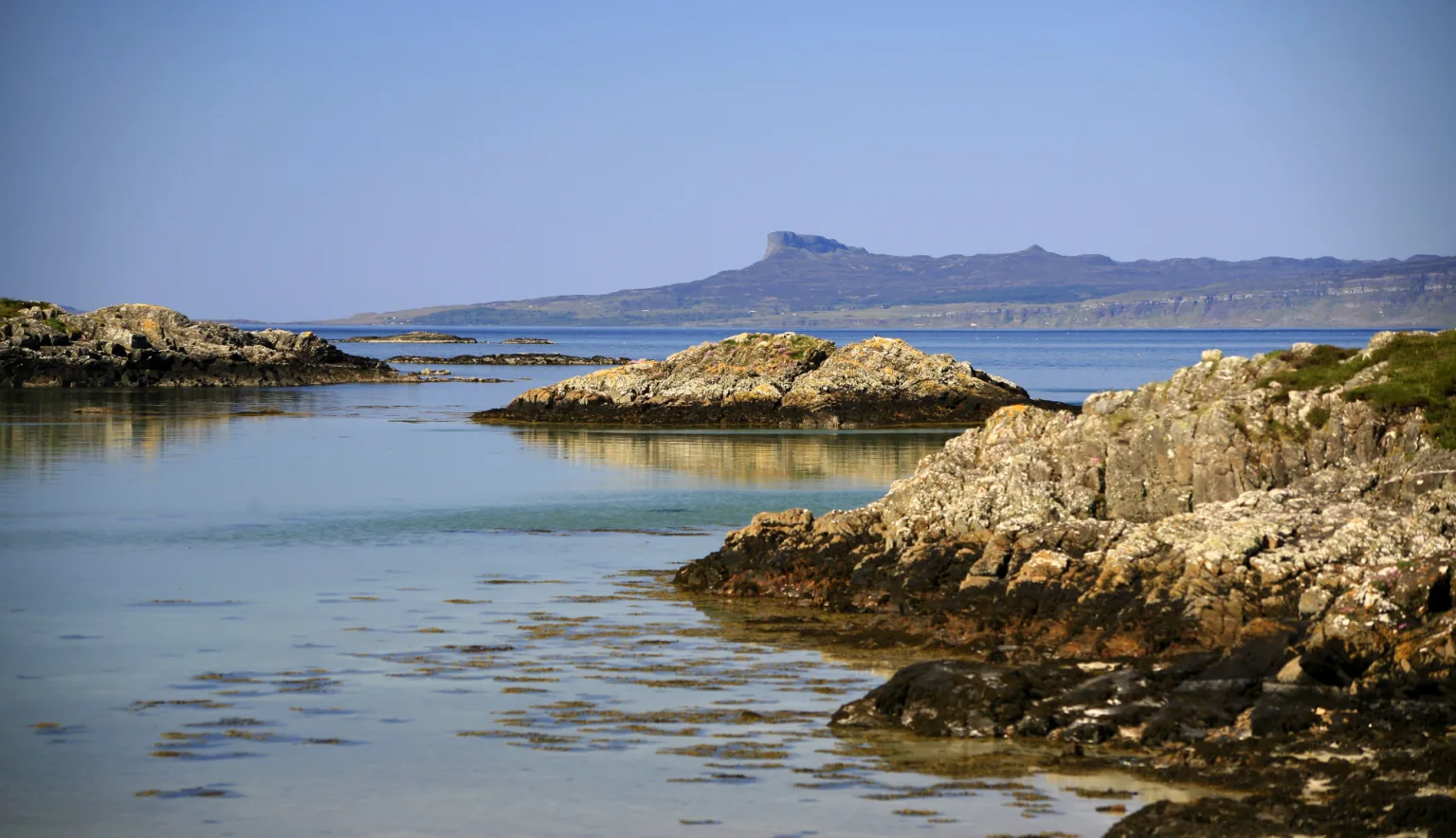A hunk of rock cast adrift in the Atlantic, the Isle of Eigg is the second largest of the archipelago of The Small Isles in the Scottish Inner Hebrides, alongside Muck, Canna, and Rum. It is, as some say, the Jewel in the Hebridean Crown.
Isle of Eigg, Inner Hebrides (Population 105)
Eigg can be found south of the Isle of Skye and north of the Ardnamurchan Peninsula in the turbulent waters of the Minch Strait. At just nine kilometres long from north to south and five kilometres from east to west, Eigg’s distinct silhouette is distinguished by the lavaridge pinnacle of An Sgùrr, formed amidst the violent tectonic activity that prompted the birth of the island some 60 million years ago. It is this formation, giving the island a fin-like appearance resembling a prehistoric creature rising out of the sea, that lent Eigg its name, translating from the Gaelic word meaning, ‘notch’. The pitchstone ridge is the largest of its kind in Europe and offers an ample feat for keen hikers.
Elsewhere, you may dare to spend a night in Sweeney’s bothy, an off-grid timber hut named after the Gaelic hermit king or wild camp amongst the graze-friendly livestock. Low tide exposes a series of caves and shipwrecks that invite exploration along the foreshore, while eagles soar over the white sand beaches of picturesque Laig Bay. To the north lie the famous ‘Singing Sands’ of white quartz.
Eigg is littered with the remnants of a rich history, from Iron Age forts to Viking burial mounds. Rather bizarrely, the island also boasts the Inner Hebrides only record label, Lost Map, home to an array of folksy indie bands.
In 1997, the islanders pioneered a history-first buyout of their own land. To this day, Eigg remains managed by the Isle of Eigg Heritage Trust, a partnership among the island’s inhabitants, the Highland Council and the Scottish Wildlife Trust. The islanders also established Eigg Electric, the world’s first stand-alone energy grid powered entirely by wind, waves and sun.
Eigg offers the abundant wildlife of the Atlantic, with healthy breeding populations of eagles and Manx shearwaters. Typical of Scotland’s wild West Coast, whales, dolphins and seals may all be spotted out to sea. Unique geology, archaeology and natural heritage combine in harmony to make Eigg an island worth sticking a pin in the map for.




















